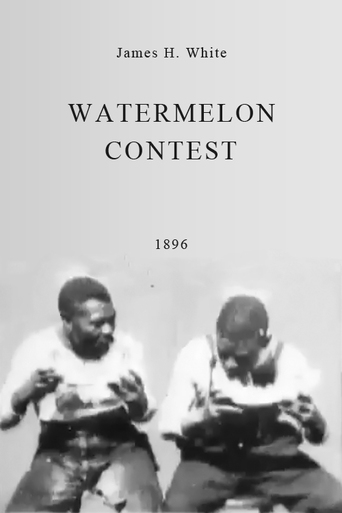

This is basically all that happens in this 18-second short film from almost 120 years ago. The director is silent film pioneer James H. White. Apparently, he found this subject far more interesting than I did as he made another film like this (only with 4 men) eating melons 4 years later. But back to this one: In here, the two men talk while they are enjoying the delicious meal. I have to say if this film has any impact or lasting impression, then it is probably that you would like to eat a juicy red melon as well. So you see the only color I mention here is red. Who cares about the men being black. It's about equality, so the color does not matter. Is it racist if two white men eat crackers? It's just two men having a meal and seemingly enjoying the very delicious taste. People need to stop being so over-the-top politically correct. Apart from that, it's still not a good movie as it's simply not really interesting. The version with four men I mentioned earlier is more fun to watch I guess.
... View More. . . as the United States Government's official Library of Congress, the Edison National Historic site, and the Museum of Modern Art all agree that this 1896 kinetoshort is WATERMELON EATING CONTEST, not "Watermelon Contest" (which would denote a watermelon GROWING competition!). Furthermore, (though someone pointed out that technically itz not cricket to refer to other reviews in your own review) I cannot restrain myself from pointing out that two-thirds of the previous reviews for this bit TALK ABOUT A DIFFERENT Edison flick, 1903's WATERMELON EATING CONTEST, which features four contestants compared to the two who were willing to be filmed seven years earlier. Secondly, the other third of reviews places this remake in 1900 (the Victorian Age), rather than prescribing it correctly into the Edwardian Epoch. These "contests" must have been pretty informal; no kind of umpire or referee is present, so each of the entrants spit out what looks to be 99% of their bitten-off melon (exactly 6 expectorations apiece during the 18.48 seconds this so-called competition runs). I can only assume the government is preserving this until someone is found who remembers what the contest rules actually were (maybe the object was to swallow the seeds, and spit out the fruit?!). At any rate, the 1903 remake is equally clueless--still no referees or judges, but just as much spitting of fruit by the participating quartet.
... View MoreWatermelon Contest (1896) ** 1/2 (out of 4) When people talk about bad racial stereotypes in films this one here has thankfully been forgotten and doesn't get too much attention. That's certainly a good thing because if more people seen it they'd probably have a stroke. The film, running just over 14-seconds, features four black men sitting in front of the camera and racing to get their slices of watermelon eaten. This film, believe it or not, was actually remade a couple times in the next six years but it's hard to imagine too many films being more offensive than this one. Having a watermelon contest to begin with would start controversy but actually seeing how the men are portrayed here is rather shocking. Keep an eye on the man in front, closest to the camera, who is actually spitting the water on himself and violently attacking the fruit making himself look like some sort of wild animal. This is certainly an important film from a historic standpoint but it's ugly as well.
... View MoreThis simple movie relies completely on a racial stereotype that today would be considered in very bad taste, at the least. Moreover, the footage contains little of interest in itself. Yet it was quite popular in its time, so much so that the original negatives wore out, and in 1900 a movie with very similar footage (also called "Watermelon Contest") was filmed so that audiences could continue to see it. The success of a movie like this is rather a caution, in its illustration that short-term popularity can blind audiences to stereotypes and other such problems.There is not much to this, just a scene of two African-American men competing with each other, as described by the title. It seems mystifying, at least now, why anyone would ever have found it particularly entertaining. Certainly, there was no intention on the part of the film-makers to be mean-spirited or harmful; they were simply oblivious to the message that it could contain. But for that reason, it provides a useful caution as to how differently a later generation might view something commonly condoned or accepted at present.There were quite a few features in the early years of cinema that resembled this one, and it is easy to confuse them with one another. This is one of at least three such surviving features made by the Edison Company. On Kino's recent collection of Edison features, there is some good commentary by Michele Wallace (it accompanies the longer 1905 feature "Watermelon Patch") in which she explains the origins of this and similar stereotypes, and indicates some of the lessons involved.
... View More